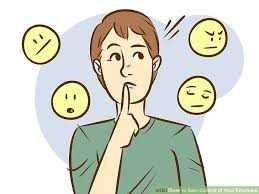Outward appearances are fundamentally the principal thing you learn, well, ever.
A grin implies upbeat, a scowl implies dismal, and so on, and so forth. Making sense of articulations is only a piece of growing up.
It must be on the grounds that their implications are coded into our brains, correct? Indeed, no.
They're absolutely not. Actually, outward appearances won't not have anything to do with feelings by any stretch of the imagination. Say what?

[The Feeling with Numerous Faces]
The possibility that outward appearances and feelings have an immediate, balanced relationship is quite natural to a ton of us, and actually, there's a considerable measure of research that is as yet acknowledged today that proposes that is the situation.
Paul Ekman (you may know him as the person "Mislead Me" depends on) created one point of interest ponder in 1971 that appeared to avow this was the situation.
He pointed his exploration at networks of individuals living in separated places, for example, Papua New Guinea.
Certain that his members had essentially no involvement with Western social mores, he requesting that they make outward appearances fitting for an assortment of circumstances: in the event that they needed to stir something up, on the off chance that they had ventured on a dead pig, if a companion had come to visit, and if their tyke had kicked the bucket. Indeed, even Westerners could distinguish their outward appearances as "outrage," "sicken," "joy," and "misery."
In this manner, we should all be conceived with feelings hardcoded into our outward appearances. Case shut.
Streak forward about 50 years, and Ekman's work is all around acknowledged.
You'll see it reflected all over, from the "How Are You Feeling?" notices in kindergarten classes to a portion of the Assembled States' fear based oppressor distinguishing proof projects.
Yet, numerous analysts have started to question a portion of Ekman's broad decisions. One of those clinicians, Carlos Crivelli, would have liked to challenge the idea of general outward appearances by returning to similar islands that Ekman went by such a large number of years prior.
In any case, dissimilar to Ekman, Crivelli and his associate Sergio Jarillo tried installing themselves in the network. They took in the dialect, remained with have families, and went up against group names.
Crivelli and Jarillo didn't remain with similar individuals Ekman examined (they were with the Trobriander individuals of Trobriand Island, while Ekman's examination centered around the Fore clan of the terrain), however they returned with likewise transformative outcomes.
Since they didn't require interpreters or social contacts, they could test the members with less intervention and along these lines less feeble focuses in correspondence.
What's more, when they requested that their host networks recognize feelings in view of the standard Western articulations, they found solutions everywhere.
Grinning was normally recognized as "satisfaction," yet the Trobrianders couldn't concur on the importance of a scrunched-up nose (frequently called "sicken" in standard feeling diagrams) or a nonpartisan articulation.
What the analysts discovered most striking was that Trobrianders overwhelmingly concurred that a panting face — the one named "stun" or "fear" in our graphs — really was a demeanor of animosity and outrage.

[A Used Emotion]
Talking with the BBC, brain research teacher Alan Fridlund recommended an elective clarification for outward appearances other than allotting them a straightforward passionate esteem.
He additionally co-created a paper with Crivelli on a similar point. The face, he says, acts "like a street sign to influence the movement that is going past it." as such, outward appearances are ways we can intuitively attempt to "coordinate" a social communication.
That is in accordance with a recent report recommending that very few individuals express their genuine feelings all over.
Perhaps people are more protected with their inward lives and more manipulative with regards to outward appearances than we already thought.
Obviously, this isn't to imply that that you can't take in anything from an outward appearance, nor that whatever remains of the world is out to trick you with their dubious looks. James A. Russell, who likewise took a shot at Crivelli's Trobriander venture, proposes that reality may be nearer to what he calls "insignificant all inclusiveness."
The face can just make such a significant number of various demeanors, so it is maybe not astounding that similar looks would repeat in disconnected societies.
Nonetheless, the real importance of that articulation could change contingent upon setting.
In the event that your demeanor is more about exploring social circumstances than communicating your internal truth, however, at that point scientists may discover more precision in recognizing articulations when they can distinguish social circumstances those articulations may be found in. What's more, actually, that is precisely what happened.
Simply take a gander at the "feelings" that Ekland initially portrayed as being all inclusive crosswise over social limits. He didn't approach his Papua New Guinean members for an "irate" face; he requested a "stir something up" confront.
The majority of alternate feelings are portrayed in also social settings. The truth of the matter is, feelings don't exist in a void, yet they do stay to some degree blocked off.
It's presumably better to peruse a man's face for what they need to occur straightaway, and not to figure their inward lives.
